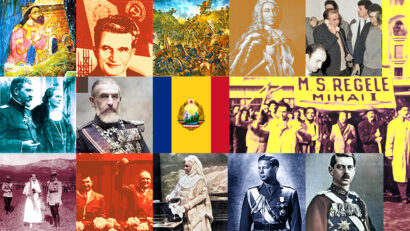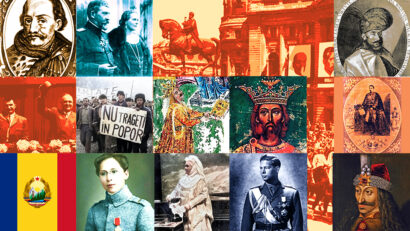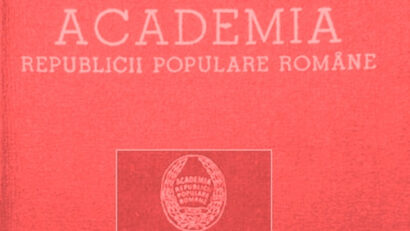Polish-Romanian Relations in the 14thCentury; The Legionnaire Rebellion
This week, well turn other pages in the countrys history, and take a look at two different stories: Polish-Romanian Relations in the 14thCentury and the Legionnaire Rebellion.
Steliu Lambru, 21.01.2013, 13:35
Polish-Romanian Relations in the 14thCentury
By the second half of the 14thcentury, what was to become the Ottoman Empire started being a significant power in the south east of Europe. It continued to dominate the area until early in the 20thcentury. Balkan Christians kept trying to resist the Ottoman war machine, but only managed to do so temporarily. Late in the 14thcentury, a Wallachian prince, Mircea the Old (1386- 1418) sought allies against the Turks, who were right across the Danube, a frontier of his state.
Relations with neighboring Hungary were not good, and at that time the king of Hungary was Sigismund of Luxembourg (1387- 1437). As a result, Mircea tried to strengthen relations with the Polish kingdom led by Wladyslaw II Jagello. After the defeat of the Serbian army at Kossovopolje in 1389, Mircea’s position was even more tenuous. With intervention from the prince of Moldavia, Petru Musat, who was a vassal to the Polish king, Mircea made a mutual defense pact on 10 December 1389 with the Polish king, mainly against the king of Hungary, but also against other enemies.
The Wallachian negotiators were assisted by a high Moldavian official in making the deal. The pact was ratified on 20thJanuary 1390 in Lublin. Its terms are not clear now, as the document has not been preserved, but we do have a letter from Mircea to Wladyslaw endorsing the treaty. What is also known is that the treaty of Lublin was followed by a tripartite pact with the king of Hungary as the new side.
The two Catholic kings and the prince of the Romanian principality were brought together by the common threat represented by the Ottoman Empire. Mircea was at an advantage once the Hungarian king agreed to the pact, because Hungary’s geographic position made it more likely for it to provide actual troops on the ground.
Even though relations with Hungary eventually improved, since Mircea became a vassal of the Hungarian king, the Wallachian prince still used the pact with Poland as a safeguard measure in the face of Hungarian encroachment. The alliance was still in place at the Battle of Grunwald in 1410, where a Moldavian detachment fought the Teutonic Knights on the side of the Polish-Lithuanian troops.
The Legionnaire Rebellion
And now to a different topic, that of the coup d’etat perpetrated by the Romanian fascists during WWII. Between January 21 and 23 1941, Bucharest was a war zone in the struggle for power. The Iron Guard, the main fascist organization in Romania at the time, was trying to wrestle power from Marshal Ion Antonescu, the then head of state, who had taken that position after the crisis of the personal dictatorship instated by King Carol II in 1938.
Using the model of the Third Reich, Antonescu’s regime imposed racial legislation and created commissions to Romanize the entire population. That meant that every person of Jewish origin with any bearing on the economy was banned from public activity. Eventually, the legislation toughened to the extent that it affected every single person with Jewish roots.
On 4 December 1940, Romania signed an economic pact with Hitler’s Germany, a 10 year pact that continued the arms and oil treaty of 1940. For four and a half months, Antonescu’s regime vied for power with the legionnaires, who were trying to infiltrate state institutions everywhere, including intelligence services. The regime stood by and didn’t take action when the legionnaires, as the members of the Iron Guard were known, retaliated against the officials who had persecuted them in the 1930s.
On November 26 1940, 64 dignitaries were shot in the prison at Jilava. The two elements struggling for power inevitably came to blows. Supported by the king, Michael I, and by the army, Antonescu managed to get on Hitler’s good side in this conflict. When he dismissed the minister of the interior, who was a legionnaire, he practically declared war on the Iron Guard. The legionnaires tried to take over all state institutions, and for two days, between January 21 and 23 1941, Bucharest was the stage of armed clashes. Around 120 of the civilian victims were Jewish. The Iron Guard lost the conflict, and about 8,000 of its members were arrested and prosecuted, and that group was dismantled forever. Some legionnaires took refuge in Germany, where they were used as leverage against the Antonescu regime by the Third Reich.





























